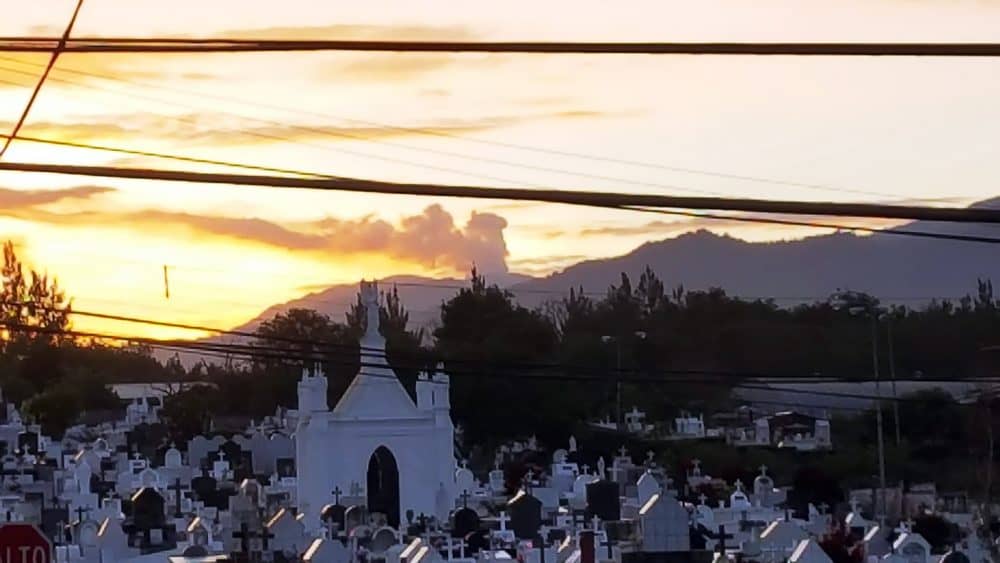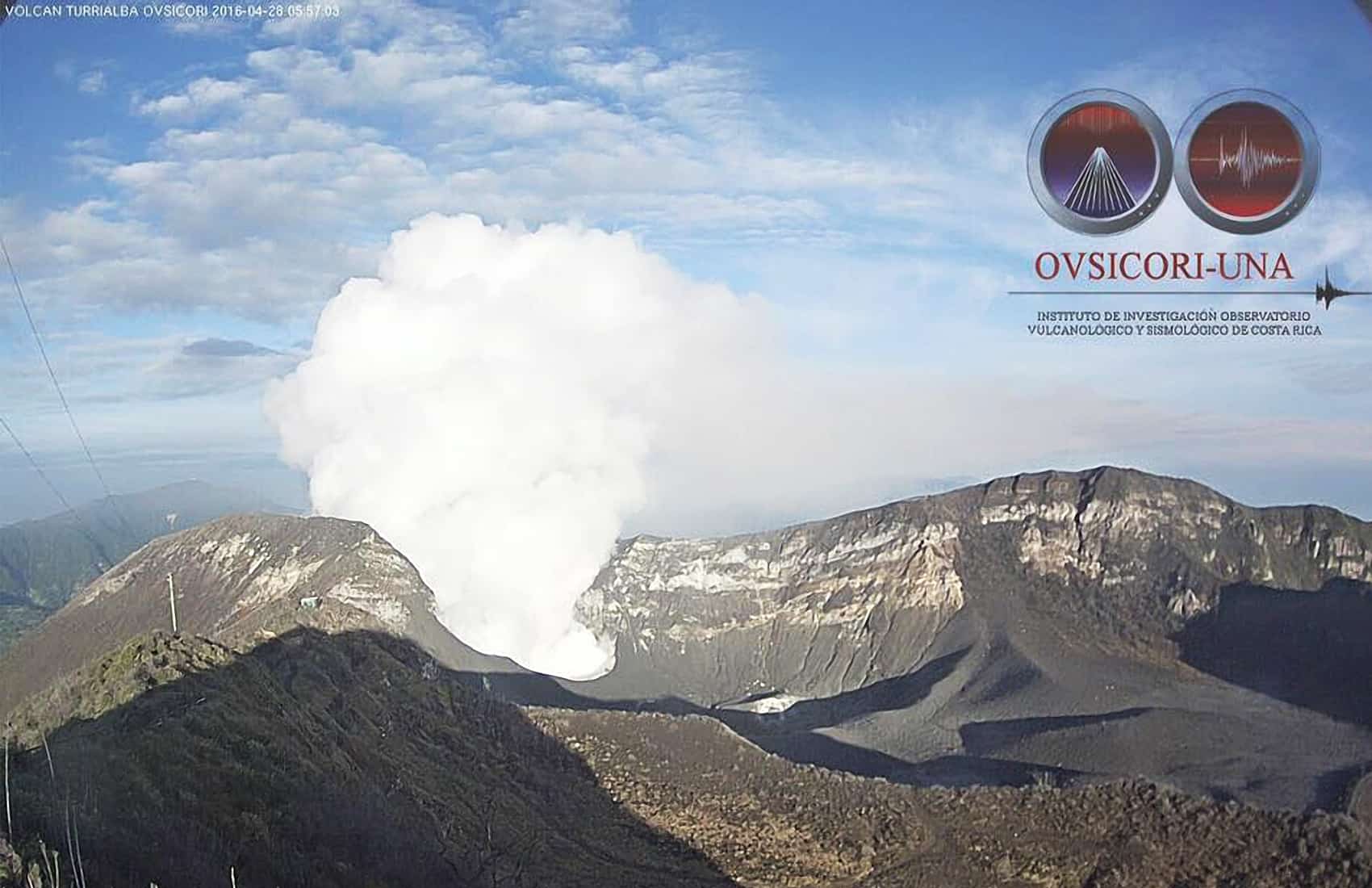A plume of vapor that formed Thursday morning at Turrialba Volcano, located about 50 kilometers east of San José, alarmed residents of Cartago province, who posted messages and photos on social media.
The white column coming out of the crater was visible from as far away as Heredia, Limón and San José.
Experts from the National University’s Volcanological and Seismological Observatory of Costa Rica (OVSICORI) ruled out the presence of ash in those emanations, which started in the early hours of Wednesday, according to the observatory’s official report.
“The white plume above the volcano is mostly vapor and gases resulting from cold water from rains falling and evaporating on the crater’s hot surfaces, a normal situation during the rainy season,” OVSICORI wrote.
A report from the University of Costa Rica’s National Seismological Network (RSN) agreed that “activity at the volcano’s crater is a normal emanation of vapor and gases.”
Tremors, too
Some residents of Turrialba canton also reported tremors in recent days, most of them low intensity.
An OVSICORI report on Tuesday stated that there had been several seismic swarms in recent weeks within a 10-kilometer area between the Turrialba and Irazú volcanoes in Cartago province.
The most recent swarm occurred over 12 hours between Saturday night and the early hours of Sunday. OVSICORI instruments recorded 75 tremors during that timespan.
https://www.facebook.com/OVSICORI/photos/a.120485684655365.9814.106757629361504/995294273841164/?type=3&theater
Most of the tremors had magnitudes ranging from a very low 1 and 3.4 degrees. Most went unnoticed by the population, the report stated.
The seismicity in the area and inside the volcano resumed at 5:24 a.m. Thursday, according to OVSICORI, and experts are closely watching the area.
RSN geologist Mauricio Mora Fernández said Thursday evening that the seismic swarm recorded over the weekend was mostly related to a local fault, known as the Toro Amarillo River fault.
Tremors recorded Thursday likely are related to activity of fluids inside Turrialba’s magma chamber, Mora said, and added that they are still conducting evaluations before issuing a definitive statement on a possible relation between the two seismic swarms.
Ongoing activity at the volcano forced officials from the National System of Conservation Areas to close visitors’ access to Turrialba in 2012. The Turrialba Volcano National Park is currently closed to the public within an area that extends five kilometers from the crater.
Ash explosions since then have mostly mostly affected crops, farm animals and rivers in the surrounding area. Several large explosions last year forced temporary closures of the Juan Santamaría International and Tobías Bolaños airports.









